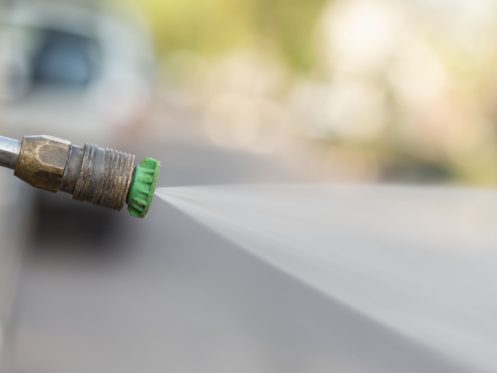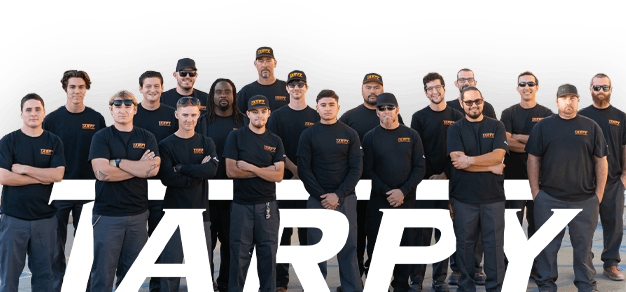Winterizing your home in San Diego is a good idea because it will generally save you money over the long term. But do you need to winterize your outside HVAC unit by covering it? This is a question more homeowners are asking themselves as this practice has become more prevalent in recent years. With that uncertainty in mind, let us consider the advantages and downsides of an HVAC unit cover and why you may or may not want to invest in a cover for your own home.
Heat Pump vs. Furnace
Furnaces are by far the most common way to heat a home in the United States. But heat pumps are prevalent in some areas of San Diego, such as the coastal zone. If your home has a furnace or a boiler, that aspect of your HVAC system is contained within the home. The external unit is a condenser used for air conditioning and thus does not operate during the winter. If you have a heat pump, then your heating system uses the condenser as well. It’s important that you know which type you have because whether or not that outside unit is in use will shape this discussion moving forward.
The Case for Covering Your HVAC Unit
Whether or not a homeowner should cover his or her condenser during winter is a polarizing discussion even among professionals. A cover can prevent leaves, branches, dirt and so forth that can fall or be blown into the unit. If icicles accumulate above where the condenser is located, then you may consider a cover that will absorb those impacts and protect the unit. Another argument in favor is that an appropriate cover can limit moisture within the unit and thus help stave off corrosion. Covers can also be beneficial during extreme weather, such as strong winds, heavy rain, hail, and so forth.
The Case Against Covering Your HVAC Unit
If you have a heat pump, the general consensus is that you should not use a cover. While there are covers that can be used when a condenser is in use, it’s usually better to correct the underlying issue, such as cutting back branches or installing heating cables that prevent ice accumulation.
Be mindful that condensers are designed to be maintained outdoors. Your unit can withstand rain, snow and cold temperatures. You do want to avoid the accumulation of leaves, nuts and so on. You can cover the top in fall, but you don’t need that cover in winter and should never wrap the entire unit in any season. Another option is simply to monitor the unit on a periodic basis and clean it out as needed. Then, the only time you would need a cover would be during a fall vacation or extreme weather.
Clear Detritus From Inside the Condenser Unit
The main argument for a cover is to prevent the accumulation of leaves and other debris. The issue with such buildup is that it traps moisture, and that dampness does lead to corrosion within the system. Generally, such wear and tear can be corrected during a seasonal tune-up, but there is potential for more serious troubles and thus it’s best to avoid the problem altogether if possible.
If you see accumulation of leaves and the like, disable the condenser via the disconnect switch installed near the unit. You then need to unscrew the lid in order to remove it. Once removed, you have access to the basin and can remove any accumulation. But be mindful that most accumulation will be trapped in the fins. To remove that matter, you should use a garden hose and a nozzle that allows for a pressurized stream. Shoot that stream from the inside out in order to clear the detritus. The direction you aim the water to dislodge the debris is important because air is drawn into the unit when in use.
Clear the Area Around the Condenser Unit
You should also maintain a clear area around the condenser unit. Do this and you’re much less likely to have debris that needs to be cleared. The general rule is 12 inches of clearance. In this one-foot area, you should not have grass or any overhanging branches. It’s often recommended that you cover the area with gravel or wood chips, which will make it much easier to maintain over time.
Clear Anything That Overhangs the Condenser Unit
While you want at least 12 inches of clearance around the condenser unit, you want more than that when it comes to plants, shrubs and overhanging branches. Several feet of clearance will ensure that root systems do not eventually undermine the base, and a lack of overhanging branches will prevent debris from falling into the top of the unit and potentially damaging the fan.
Schedule a Heating Tune-Up in Autumn
Ideally, you should schedule an HVAC inspection and tune-up in the fall prior to the first use of your heating system. Your HVAC technician will clean and lubricate your condenser unit as part of this service. If you are considering a cover, this is also an excellent time to consult with your technician about that.
Perform Periodic Inspections of Your Outside HVAC Unit
Even if you have your HVAC system inspected by a professional twice a year, it’s a good idea to perform your own inspections. Be on the lookout for any buildup or excess moisture, and make sure that the outdoor unit has the necessary clearance around it. If you do spot anything unusual, then you should call your local HVAC professionals to come out and have a look at it.
Choosing an HVAC Unit Cover
If you decide that you do need a cover either for long-term use during the winter or short-term use during bad weather, it’s important to select an appropriate product. If you are covering a unit that will not be operated, then you will want to select a cover that is not permeable and which fits just over the top of the unit. It can extend over the side to some degree, but avoid covers that wrap the entire unit as that makes it attractive to animals who can perform far more damage.
If, on the other hand, you are purchasing a cover for a unit that will be operated during the winter, then the material must be permeable as air will need to pass through. It is important that you introduce as little resistance as possible. Impeded airflow will lead to more wear and tear and a higher energy bill.
Your Heating Pros in San Diego
Tarpy Plumbing, Heating & Air is a leading HVAC company that serves homeowners throughout San Diego and the neighboring communities. If you are considering a winter cover for your condenser unit, we can help you determine if a cover is appropriate and which style is ideal for your equipment. Our team also installs, services and repairs all manner of heating and cooling systems, and we have expert plumbers who can perform both small and major plumbing installation and repair services. Call our company today or contact us online to learn more about our services and to schedule an appointment.


 SPECIALISTS
SPECIALISTS

